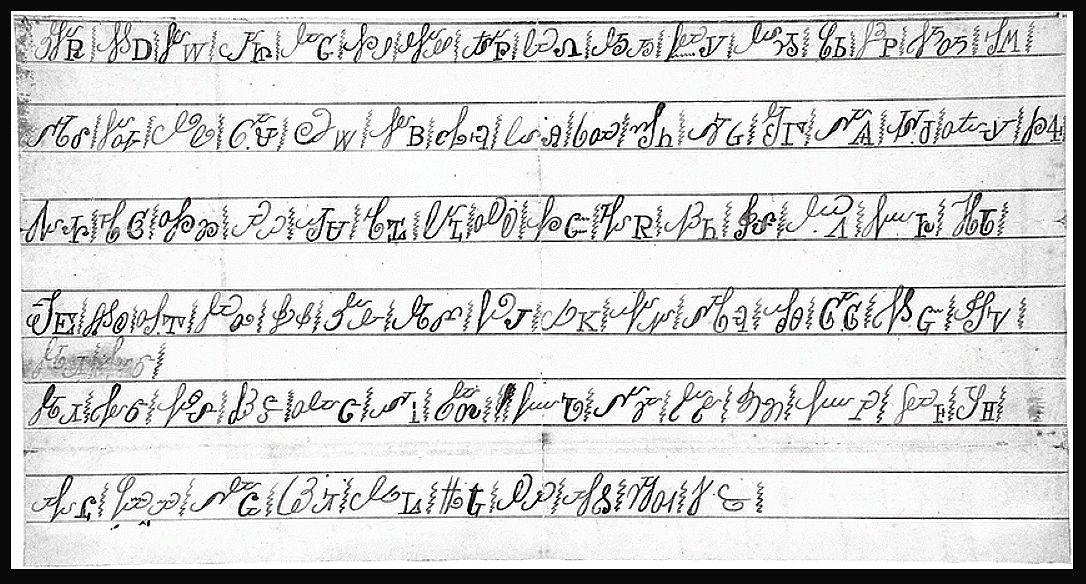
if you read & write ᏣᎳᎩ:
an ’ apostrophe will mark vowel deletion
This website uses an ’ apostrophe to indicate vowel deletion when writing in ᏣᎳᎩ syllabary. The ’ apostrophe will follow a syllabogram (most symbols in a syllabary) to show we will omit that syllabogram’s vowel sound. When this occurs, we fully pronounce the 1st of the 2 syllabograms while only dropping the vowel sound of the 2nd, giving us 2 syllabograms that are pronounced only as 1 syllable. Uncommonly an ’ apostrophe will be attached to a syllabogram that will front a word when only the consonant of the 1st syllabogram in a word is pronounced.
· Example: ᏥᎪᏩ’ᏘᎭ. We pronounce Ꭺ and also Ꮹ’s consonant sound, but we drop Ꮹ’s vowel sound Ꭰ.
· Another example: ᏣᏓᎦ’ᏎᏍᏕᏍᏗ, as we pronounce Ꮣ plus Ꭶ’s consonant sound, but we drop Ꭶ’s vowel sound Ꭰ.
· An example of an ’ apostrophe at the front of the word: Ꮵ’ᏈᏍᏗ, as we pronounce Ꮵ’s consonant sound but not Ꮵ’s vowel sound.
Using an ’ apostrophe is just one written way we can help learners less familiar with reading ᏣᎳᎩ to be able to more easily read when 2 syllabograms are pronounced only as 1 syllable, or when there is a word begins with a syllabogram that only carries its consonant pronunciation. Some older hymnals use a subscript : colon. Some language programs use a , comma. Sometimes in handwriting people use an _ underline. The 2001 “ᏣᎳᎩ ᏗᎧᏃᎩᏍᏗ ᎦᎸᏍᎩ ᎢᏯᏂᏛ ᏧᏃᏪᎳᏅᎯ“ (“Cherokee Hymnal”) published by GBS (Global Bible Society) uses a . period in between the 2 syllabograms pronounced as 1 syllable. This website also uses an ’ apostrophe to avoid repeating any commonly used punctuation markers, for ease of legibility, and because leaners ᎠᎴ ᎠᏂᏬᏂᏍᎩ who speak english will already be used to using an ’ apostophe to mark for omissions in writting, like in contractions like the words “they’re” or “ain’t”.
Optional vowel omission that frequently occurs at the end of words in casual speech won’t have an ’ apostrophe due to their more optional nature & high predictability.
Syllabogram is a fancy word for most of the symbols in a syllabary. It’s kind of like how an alphabet has symbols called letters. Every symbol in the ᏣᎳᎩ syllabary is a syllabogram, except for Ꮝ. Ꮝ isn’t a syllabogram since it isn’t pronounced as a complete syllable on its own and it will always be attached to a syllabogram. If you’re very curious to what you could call or classify Ꮝ as, one may call Ꮝ a "segmental grapheme”.
